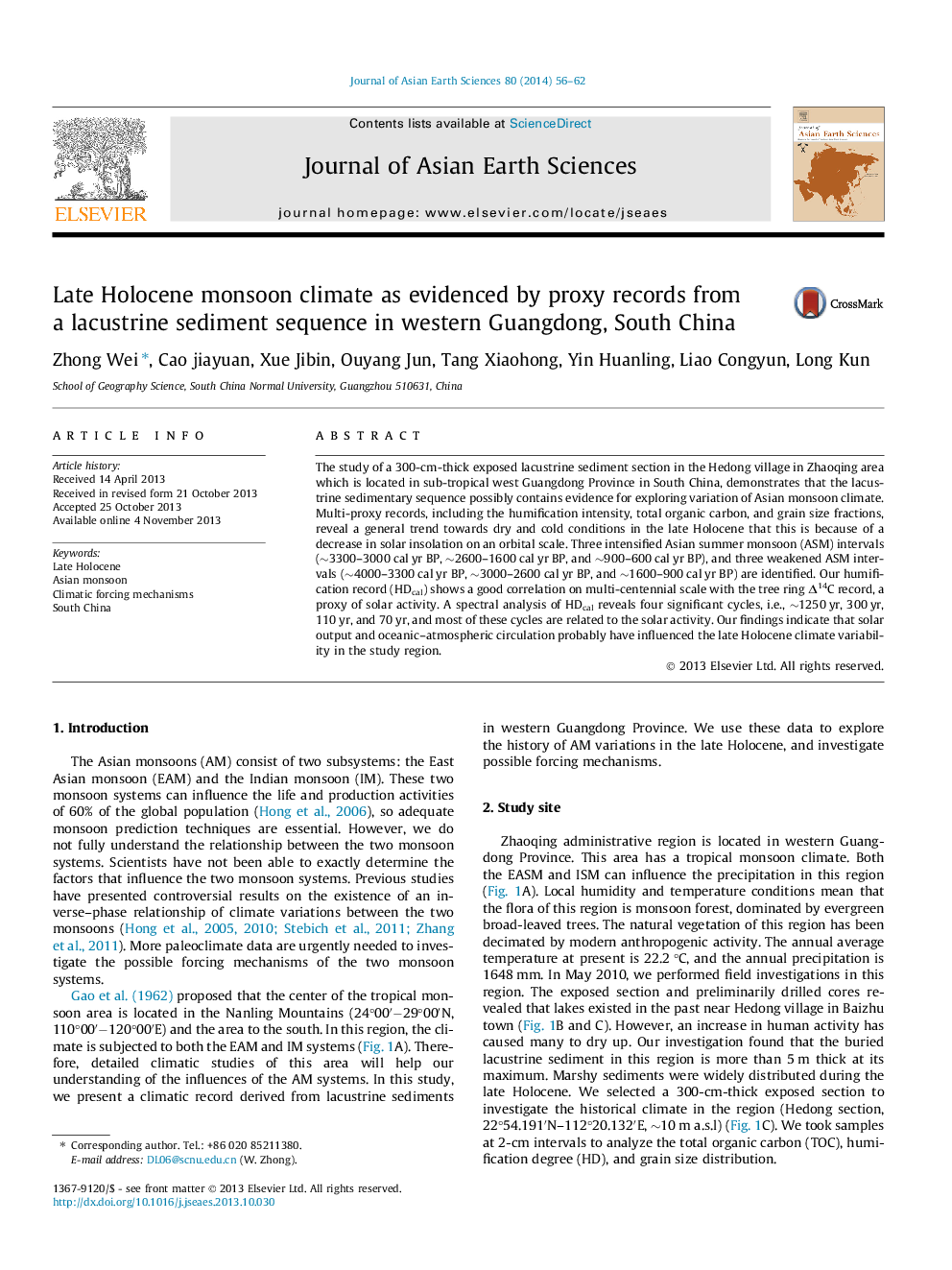| کد مقاله | کد نشریه | سال انتشار | مقاله انگلیسی | نسخه تمام متن |
|---|---|---|---|---|
| 4730764 | 1640388 | 2014 | 7 صفحه PDF | دانلود رایگان |
• We reconstruct late Holocene climate history of subtropical west Guandong in South China.
• Multi-proxy records reveal three stronger and three weaker Asian summer monsoon periods.
• Three dry and cold intervals may correlate with the Bond events 3, 2, and 1.
• The trend of climatic changes and the significant cycles reflect strong signals of solar forcing.
• Solar output and oceanic–atmospheric circulation played a role in the late Holocene climate.
The study of a 300-cm-thick exposed lacustrine sediment section in the Hedong village in Zhaoqing area which is located in sub-tropical west Guangdong Province in South China, demonstrates that the lacustrine sedimentary sequence possibly contains evidence for exploring variation of Asian monsoon climate. Multi-proxy records, including the humification intensity, total organic carbon, and grain size fractions, reveal a general trend towards dry and cold conditions in the late Holocene that this is because of a decrease in solar insolation on an orbital scale. Three intensified Asian summer monsoon (ASM) intervals (∼3300–3000 cal yr BP, ∼2600–1600 cal yr BP, and ∼900–600 cal yr BP), and three weakened ASM intervals (∼4000–3300 cal yr BP, ∼3000–2600 cal yr BP, and ∼1600–900 cal yr BP) are identified. Our humification record (HDcal) shows a good correlation on multi-centennial scale with the tree ring Δ14C record, a proxy of solar activity. A spectral analysis of HDcal reveals four significant cycles, i.e., ∼1250 yr, 300 yr, 110 yr, and 70 yr, and most of these cycles are related to the solar activity. Our findings indicate that solar output and oceanic–atmospheric circulation probably have influenced the late Holocene climate variability in the study region.
Journal: Journal of Asian Earth Sciences - Volume 80, 5 February 2014, Pages 56–62
